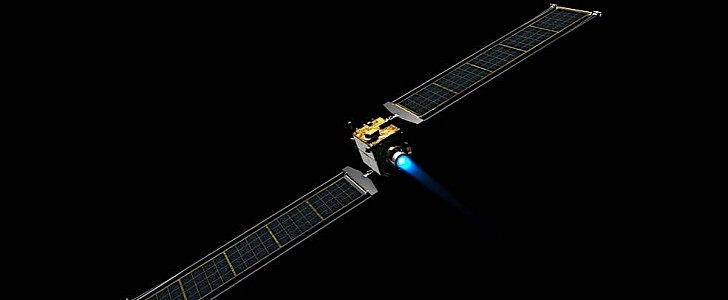The first spacecraft purposefully built to have a rather violent meeting with an asteroid just sent back some images from 2 million miles (3.2 million km) away. Called the Double Asteroid Redirection Test, or just DART, the spacecraft has recently turned on its camera, showing us glimpses of its journey as it heads to the binary asteroid Didymos for its impact.
Humanity is not fully prepared to face killer asteroids. NASA is trying to find solutions to fight back by proving that the trajectory of a massive space rock heading towards Earth can be altered. How? By smashing a spacecraft into it. That’s exactly what DART will do – in less than a year.
The spacecraft began its journey on November 24th, taking off from Vandenberg Space Force Base in California. After two weeks of traveling through the darkness of space, DART opened its “eyes,” aka its Didymos Reconnaissance and Asteroid Camera for Optical (DRACO) camera, the only instrument carried abroad the spacecraft.
Since the mission will focus on changing the course of the asteroid, DART doesn’t actually need other science instruments to study the asteroid. Moreover, it will not use shoot or fire anything towards the celestial object as it will rely solely on kinetic energy to accomplish its mission.
The recent images sent by the spacecraft’s DRACO camera show near a dozen close to where the constellations Perseus, Aries, and Taurus intersect. NASA used the stars in the image to pinpoint the exact orientation of the camera. The photos also helped the team find any optical imperfections and adjust the brightness of objects.
All of these are essential details that will allow DART to capture images of the asteroid Didymos and its moonlet asteroid Dimorphos before it smashes at speeds of 15,000 mph (24,140 kph) into the smaller portion of the binary system. The last images will play a crucial role in helping NASA understand the overall effects of the impact.
Even if DART gives Dimorphos just a little nudge, it will be enough to change its orbit around the Didymos by several minutes. That translates as precious time that could offer Earth a chance to defend itself against these killer space rocks.
The spacecraft began its journey on November 24th, taking off from Vandenberg Space Force Base in California. After two weeks of traveling through the darkness of space, DART opened its “eyes,” aka its Didymos Reconnaissance and Asteroid Camera for Optical (DRACO) camera, the only instrument carried abroad the spacecraft.
Since the mission will focus on changing the course of the asteroid, DART doesn’t actually need other science instruments to study the asteroid. Moreover, it will not use shoot or fire anything towards the celestial object as it will rely solely on kinetic energy to accomplish its mission.
The recent images sent by the spacecraft’s DRACO camera show near a dozen close to where the constellations Perseus, Aries, and Taurus intersect. NASA used the stars in the image to pinpoint the exact orientation of the camera. The photos also helped the team find any optical imperfections and adjust the brightness of objects.
All of these are essential details that will allow DART to capture images of the asteroid Didymos and its moonlet asteroid Dimorphos before it smashes at speeds of 15,000 mph (24,140 kph) into the smaller portion of the binary system. The last images will play a crucial role in helping NASA understand the overall effects of the impact.
Even if DART gives Dimorphos just a little nudge, it will be enough to change its orbit around the Didymos by several minutes. That translates as precious time that could offer Earth a chance to defend itself against these killer space rocks.








